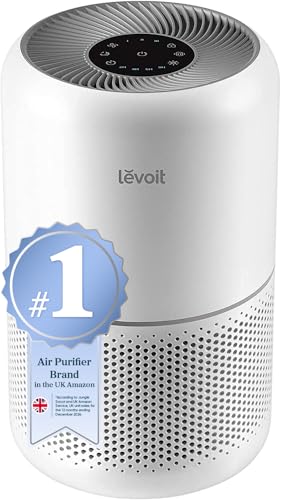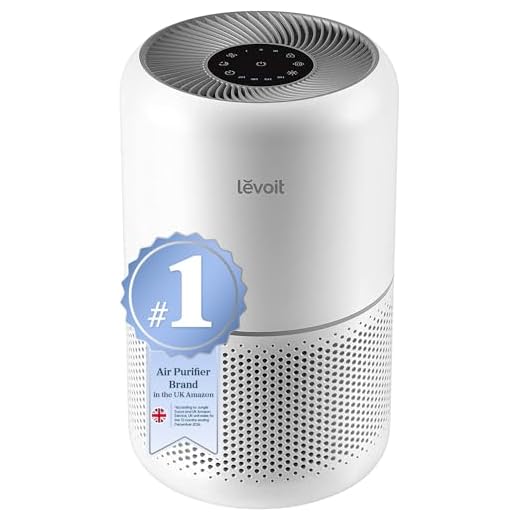




Research indicates that certain breeds can minimize allergens, making them suitable for individuals with respiratory issues. Breeds such as Poodle, Maltese, and Bichon Frise produce fewer dander and saliva proteins, which are common triggers for allergies and respiratory complications. These breeds are often recommended for those sensitive to airborne particles.
In my experience, selecting a breed that produces less dander has made a significant difference. When I adopted my first Poodle, I noticed my symptoms improved considerably. Regular grooming and cleaning routines further reduced airborne irritants in my home environment, enhancing my overall wellbeing.
Consulting with a veterinarian before making a decision can provide insights tailored to individual health needs. They may suggest specific breeds based on personal health conditions and environmental factors. It’s crucial to remember that while some breeds are less likely to provoke allergies, individual reactions can vary, so spending time with a potential pet beforehand is advisable.
Dog Breeds Suitable for Allergy Sufferers
Choosing a pet that minimizes allergy triggers is crucial for those with respiratory issues. Breeds known for producing less dander and saliva can be particularly suitable. Here’s a list of breeds that often work well for sensitive individuals:
- Portuguese Water Dog
- Bichon Frise
- Shih Tzu
- Soft Coated Wheaten Terrier
- Basenji
These breeds tend to have hair rather than fur, which might reduce the amount of allergens released into the home environment. Regular grooming and bathing can further help in controlling dander levels.
In addition to breed selection, consider the following tips to create a more comfortable living space:
- Maintain clean floors and surfaces to reduce allergen accumulation.
- Use air purifiers to filter out airborne particles.
- Establish pet-free zones, especially in bedrooms.
- Opt for hypoallergenic bedding and furniture materials.
Monitoring your health after bringing a new companion home is essential. Pay attention to any changes in symptoms and consult a healthcare professional if necessary. Each person’s reaction to animals varies, so personal experience will guide your decision.
Understanding Hypoallergenic Dog Breeds
Choosing a canine companion involves understanding various breeds, especially if you or a family member suffers from respiratory issues. Breeds often marketed as low-shedding or less allergenic can be suitable options. These animals produce fewer allergens, primarily dander, which can trigger symptoms in sensitive individuals.
Some breeds stand out due to their unique coat structures and grooming needs. For example, poodles have a curly coat that traps dander and hair, preventing it from dispersing into the environment. Similarly, bichon frises feature a soft, curly coat that requires regular grooming, which helps minimise allergen spread.
| Breed | Coat Type | Grooming Needs |
|---|---|---|
| Poodle | Curly | High |
| Bichon Frise | Curly | High |
| Shih Tzu | Long and Straight | Moderate |
| Basenji | Short | Low |
Regular grooming is essential, not only for maintaining their appearance but also for reducing allergens. Bathing these animals every few weeks can significantly decrease the amount of dander. Additionally, keeping your living space clean by vacuuming with a HEPA filter and using air purifiers can support a healthier environment.
While no breed is entirely free of allergens, understanding the characteristics of these animals can help in making an informed choice. It’s always advisable to spend time with a specific breed before bringing one home, ensuring compatibility with your health needs.
How Dog Allergens Affect Asthma Symptoms
Minimising exposure to pet allergens can significantly lessen respiratory issues. Regular cleaning routines, such as vacuuming with HEPA filters and using air purifiers, help reduce airborne particles. It’s essential to establish dedicated pet-free zones, especially in bedrooms, to create safe spaces for individuals sensitive to allergens.
Specific breeds often produce fewer allergens, but individual reactions can vary. Daily grooming reduces dander and hair in the environment, which is advantageous for those with respiratory conditions. Bathing pets regularly can also help, as it decreases the accumulation of allergens on their coats.
Consulting with medical professionals before introducing a pet is wise. They can provide tailored advice and possibly recommend allergy testing. In addition, monitoring any changes in symptoms after bringing a new companion into the home is crucial. If issues arise, it may be necessary to reconsider the living arrangements.
Feeding pets a balanced diet contributes to overall health, which can indirectly affect allergen production. For instance, choosing the best dog food for dogs who throw up can help maintain their well-being and reduce potential allergen triggers in their environment.
Finally, fostering a positive relationship with a furry friend while managing allergens requires ongoing commitment and awareness. Keeping track of environmental factors and being proactive can lead to a healthier living experience for everyone involved.
Choosing the Right Hypoallergenic Breed for Asthma Sufferers
Opting for the right canine companion can significantly enhance the quality of life for individuals with respiratory issues. Selecting breeds that are known to produce fewer allergens is a practical approach. Breeds such as the Poodle and Bichon Frise are often recommended due to their unique coat structures that trap dander and hair, preventing it from becoming airborne.
Factors to Consider
When evaluating potential breeds, consider size and temperament. Smaller breeds like the Maltese or Shih Tzu can adapt well to various living situations and may be less likely to trigger allergic reactions. Additionally, each dog possesses a unique personality; choose one that aligns with your lifestyle and energy levels. Gentle and calm canines often create a more soothing environment, which can be beneficial for those with breathing difficulties.
Grooming and Maintenance
Regular grooming is crucial in managing allergens. Breeds like the Portuguese Water Dog require consistent brushing to keep their coats healthy and reduce shedding. Bathing should also be done routinely to minimise dander build-up. Investing in high-quality grooming tools is essential, as it helps maintain the coat while keeping the living space clean and allergen-free.
Ultimately, spending time with various breeds before making a commitment is wise. Visiting shelters or breeders allows you to assess how your body responds to different canines, ensuring a harmonious relationship that enhances your well-being.
Environmental Factors in Managing Asthma with Canines
Creating a clean living space is crucial. Regular vacuuming and dusting help eliminate potential allergens that might trigger symptoms. Investing in high-efficiency particulate air (HEPA) filters for your home can significantly reduce airborne irritants. I found that after installing these filters, my breathing improved noticeably, especially during allergy seasons.
Maintaining humidity levels between 30-50% is beneficial. Excess moisture can encourage mould growth, while too little can dry out airways. A dehumidifier might be a worthwhile addition to your home, especially in damp areas like basements. I remember how my own struggles with humidity lessened after making this adjustment.
Outdoor Considerations
Be mindful of outdoor conditions. Pollen counts can impact individuals with respiratory issues. Keeping windows closed during high pollen days and using air conditioning can help. I often check local pollen forecasts before planning outdoor activities with my canine companion. Additionally, bathing your furry friend after walks can reduce the amount of pollen they bring indoors.
Routine and Habits
Establishing a consistent cleaning routine is key. Regularly washing bedding, toys, and any shared spaces helps reduce exposure to irritants. I’ve found that incorporating these habits into my weekly schedule makes a noticeable difference. Also, consider designating specific areas of the house as pet-free zones, providing a safe haven when symptoms flare up.
Training and Care for Low-Allergen Canines
Consistent training is key to ensuring a harmonious relationship between you and your low-allergen companion. Start with basic commands like sit, stay, and come. These foundational skills promote safety and good behaviour.
Daily Exercise Routine
Physical activity is vital for these breeds. Engage in daily walks or play sessions tailored to their energy levels. Here are some recommended activities:
- Short, brisk walks (20-30 minutes)
- Interactive play with toys that stimulate their minds
- Agility training to enhance coordination and fitness
Regular exercise not only keeps them healthy but also reduces anxiety, which can impact respiratory conditions.
Grooming Practices
Grooming is essential to minimise allergens. Frequent brushing helps remove loose hair and dander. Follow these tips:
- Brush at least twice a week, or more during shedding seasons.
- Use a vacuum with a HEPA filter to reduce allergens in your home.
- Schedule professional grooming every 4-6 weeks for a thorough clean.
Bathing your pet every month can also assist in lowering allergen levels. Use gentle, hypoallergenic shampoos designed for sensitive skin.
Establishing a consistent routine ensures your companion remains well-trained and healthy while minimising potential triggers for respiratory issues. Enjoy the bond that develops through these shared activities and care practices.
Personal Experiences: Asthma and Hypoallergenic Dog Ownership
Bringing a furry friend into my home was a decision filled with anticipation and a touch of anxiety. I suffer from respiratory issues, so I was cautious about how a pet might impact my wellbeing. After researching various breeds, I decided to adopt a small, low-shedding breed that was reputed to be less likely to trigger allergy symptoms.
Initially, I was apprehensive. I followed strict cleaning routines and monitored my environment closely. To my surprise, my symptoms remained stable. Regular grooming and bathing of my new companion helped minimise dander and allergens in the house, which made a significant difference. It was essential for me to establish a cleaning regimen, including frequent vacuuming and using air purifiers, to create a safe space for both of us.
In my experience, choosing a breed known for lower allergenic properties was key. I found that some breeds naturally produce fewer allergens, which lessened my worries. Meeting with breeders and spending time with their animals before making a commitment helped me gauge my reactions. It was reassuring to find a pup that I bonded with and felt comfortable around.
Training played an important role in our journey together. Basic commands not only strengthened our bond but also established boundaries that improved my overall experience. I noticed that keeping a consistent routine helped my companion adjust and made it easier for me to manage my environment. Positive reinforcement worked wonders in making our interactions enjoyable and rewarding.
Socialising my pet was another essential aspect. I introduced my companion to various environments, which helped both of us acclimatise to different situations. I learned to recognise my limits while allowing my furry friend to explore the world. This balance was crucial in maintaining my health while ensuring my pet was happy and well-adjusted.
Adopting a companion has been one of the most fulfilling experiences of my life. The companionship, joy, and love they bring far outweigh the challenges. With careful planning and attention to detail, it is possible to enjoy a fulfilling relationship without compromising health. Each day continues to be a lesson in love, responsibility, and managing my condition with grace.









